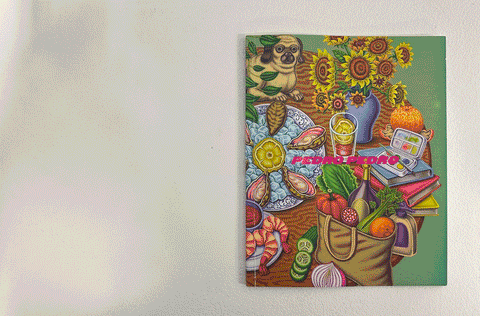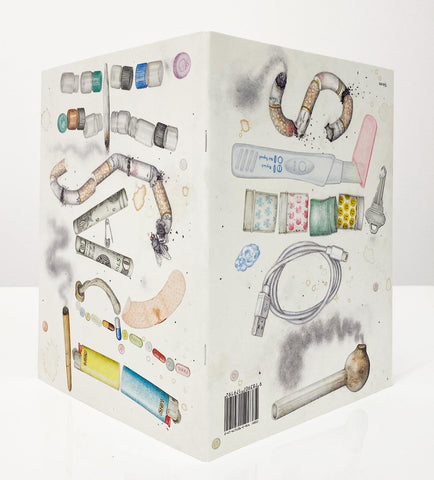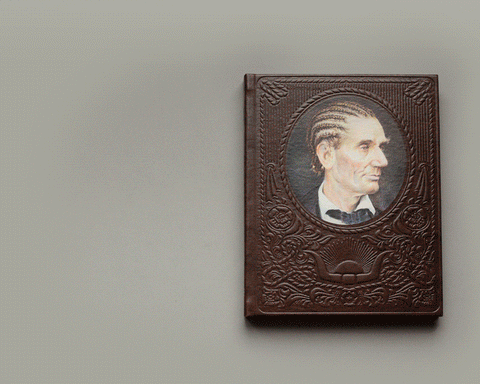Post-Analog Painting
The Hole NYC
Exhibition catalogue
Post Analog Painting at The Hole Arpil-May 2015
Softcover, 40 pages
Essay by Kathy Grayson
MORE ABOUT THE EXHIBITION:
The long and complex shift in culture from analog media to digital media is the most significant transformation of our generation, and it has long-reaching and manifold effects that continue to permeate all modes of visual expression. In painting the effects have been slow to reverberate. “Inkjet on canvas” was the center of these discussions for many years; however, after Roberta Smith deemed the Wade Guyton show at the Whitney acceptable, everyone could chill out about whether paintings were composed in a computer and printed out or whether an actual paintbrush was wielded.
But the more interesting shift in painting has nothing to do with the media used but instead the forms, composition and content in painting. Digital tools have affected our imaginary, the logic of Photoshop or pixelation shapes a painter’s approach to color, form, depth, shade, tone, volume; all the parameters that guide the application of paint to canvas. When Trudy Benson paints a circle, it’s the specific kind of sloppy shape a hand and mouse draws, not the shape a hand holding a brush would make.
Content of paintings has been affected (in this show: Angry Birds, Anime and pizza) as well as meaning, as the viewer takes in the work or communicates the work. If the painting gets a like, you might snap a photo before you move on; an Instagrammable image has a leg up in the market, a high-contrast composition with punched up colors that looks good at 72dpi will get re-blogged more often, and the push and pull between what inspires the work and how it is shared cycles onward as content, meaning, approach and reproduction accelerate.
“Post-Analog” is meant so suggest that the paintings in this show were not even conceivable before digital imaging changed the structure of our images. Sure, we erased things, but not the way the “erase tool” erases. Items at shallow depth leave shadows but not the standardized way a drop-shadow filter does. Focus and resolution exist in emulsion photography but the way that paint is applied in this show has more in common with low-res JPEGS and pixels-per-inch.
Peter Halley postulated that texture in painting would be what saves analog painting from screenic culture; an insistence on the physical object that must be seen with an eyeball in person; but what if we can 3D-print the thick brushwork and impastoed surface that makes paint-lovers sigh? Airbrush and spray are frequent tools of digitally-minded painters so that their IRL creations can have the feeling of a computer gradient or a glowing laptop screen.
The topic of how digital imaging has changed the way young artists approach painting is too broad to tackle here but in the exhibition, some of the most interesting changes are the most subtle. Jonathan Lasker’s small oil and pigment on paper work poses an interesting puzzle; graduating from CalArts in 1977, this pioneering abstract artist’s career has completely spanned the analog to digital shift, though his work has not changed drastically. To me, his kind of pictorally-suggestive abstraction features “units of painting” in a way that perhaps recapitulates the units of data that make up all images today.
Published by Anteism
![]()



